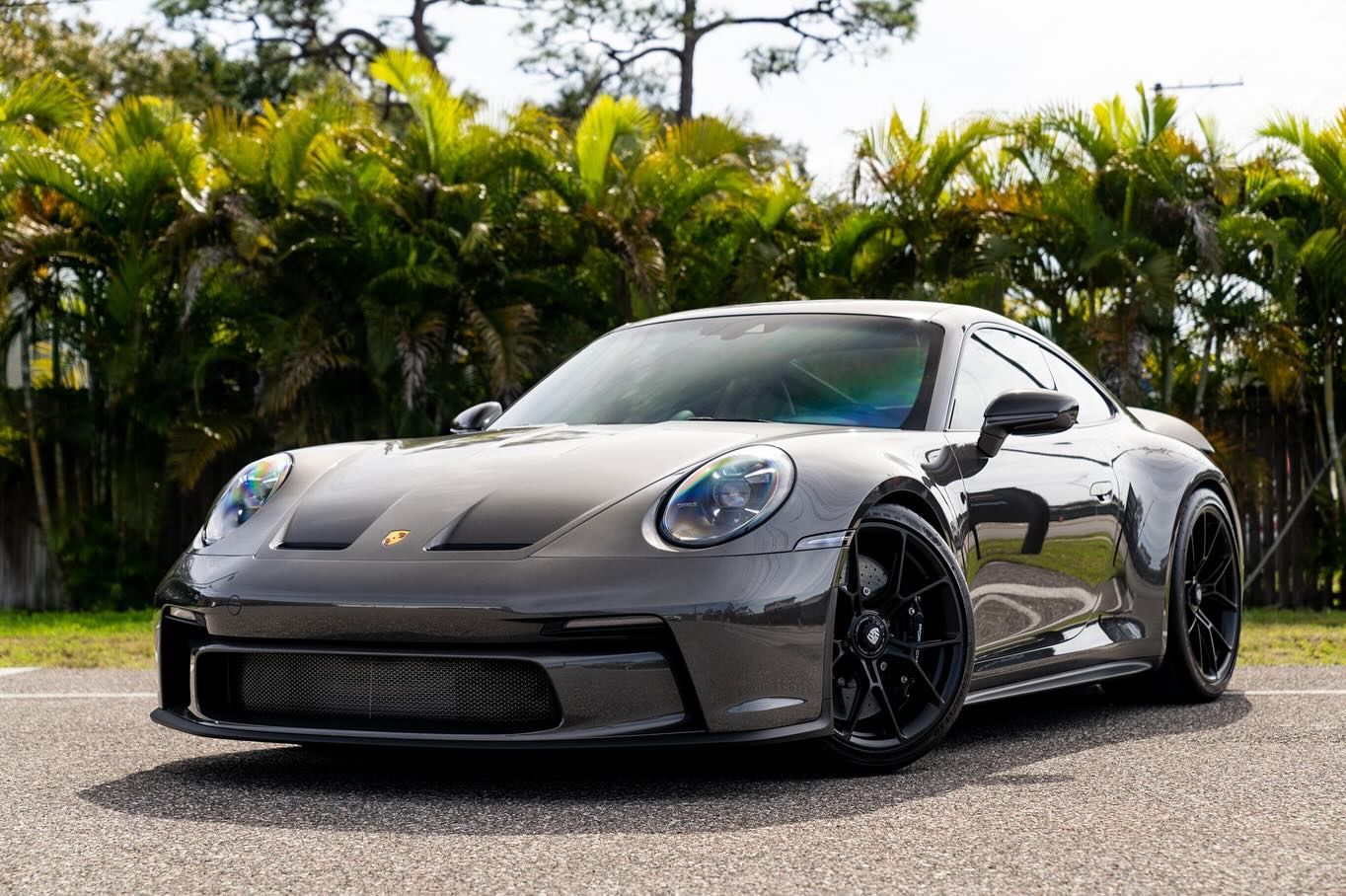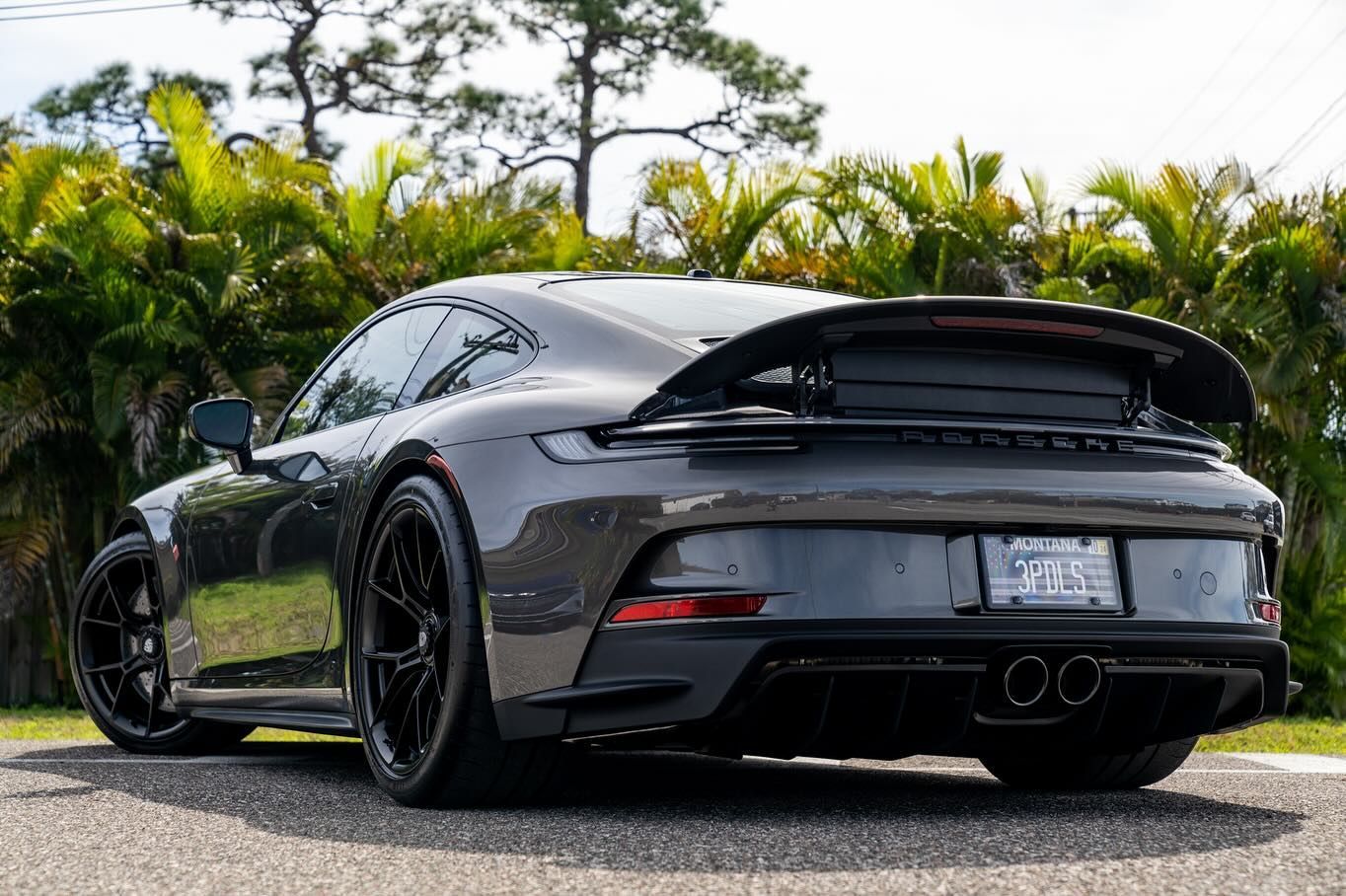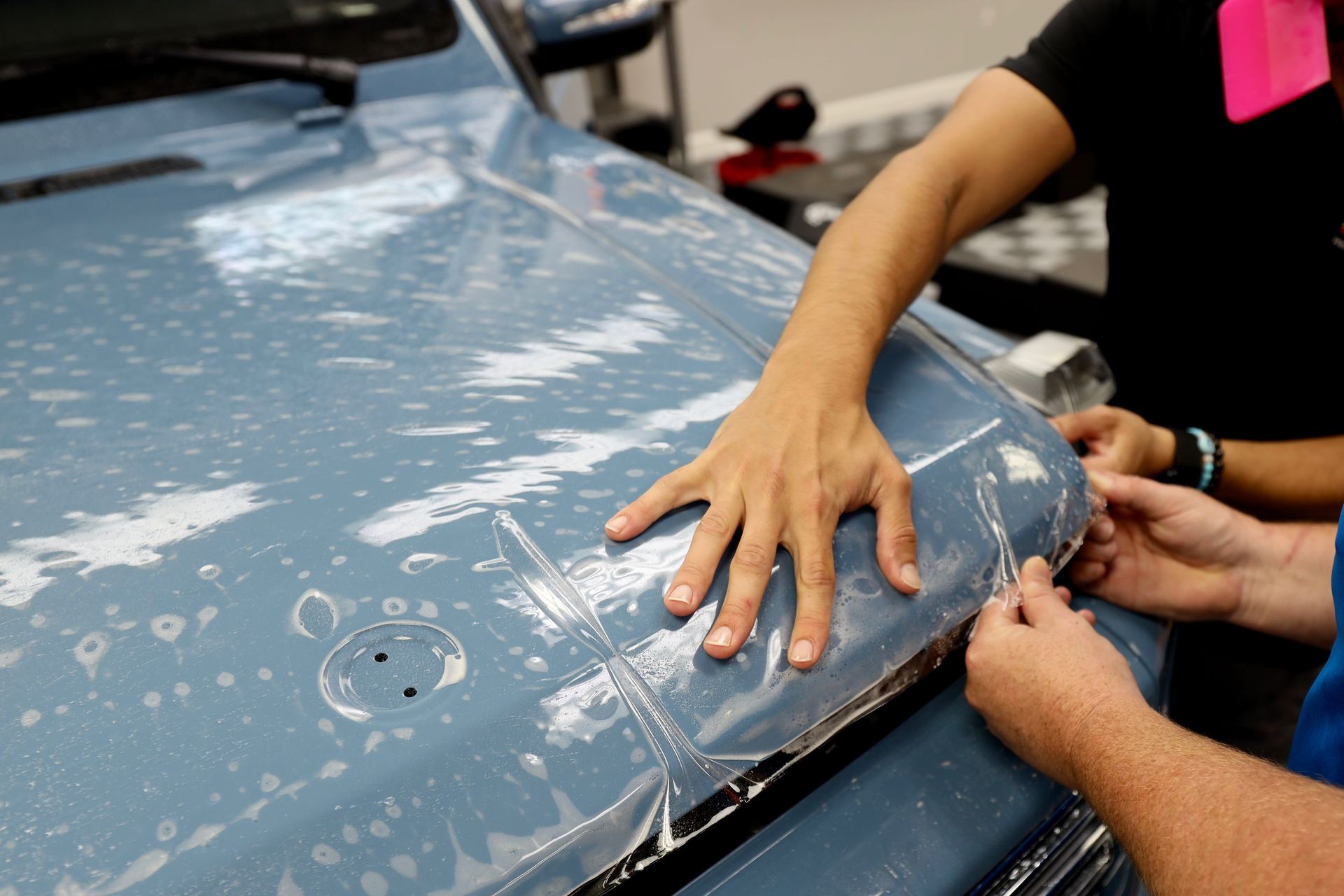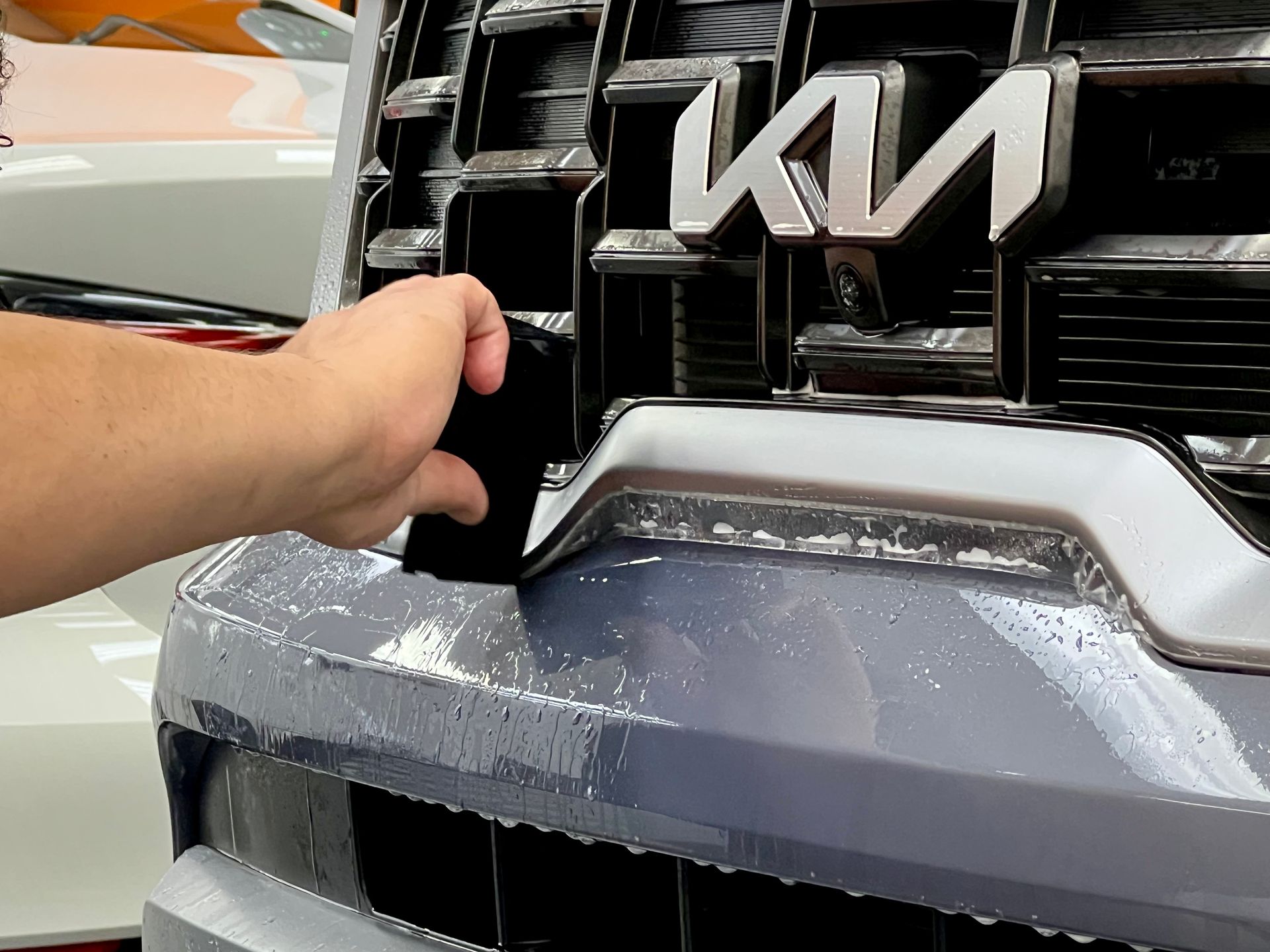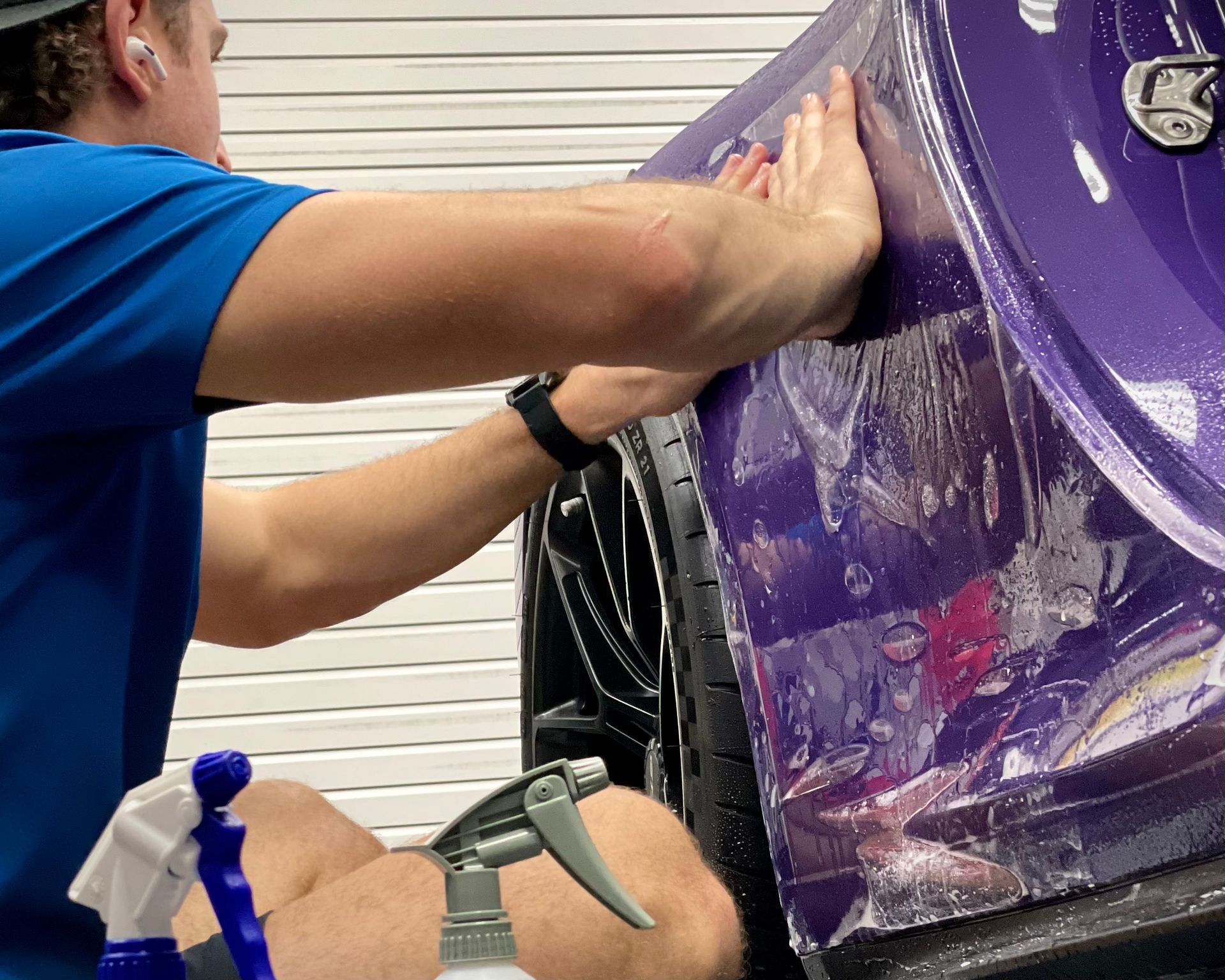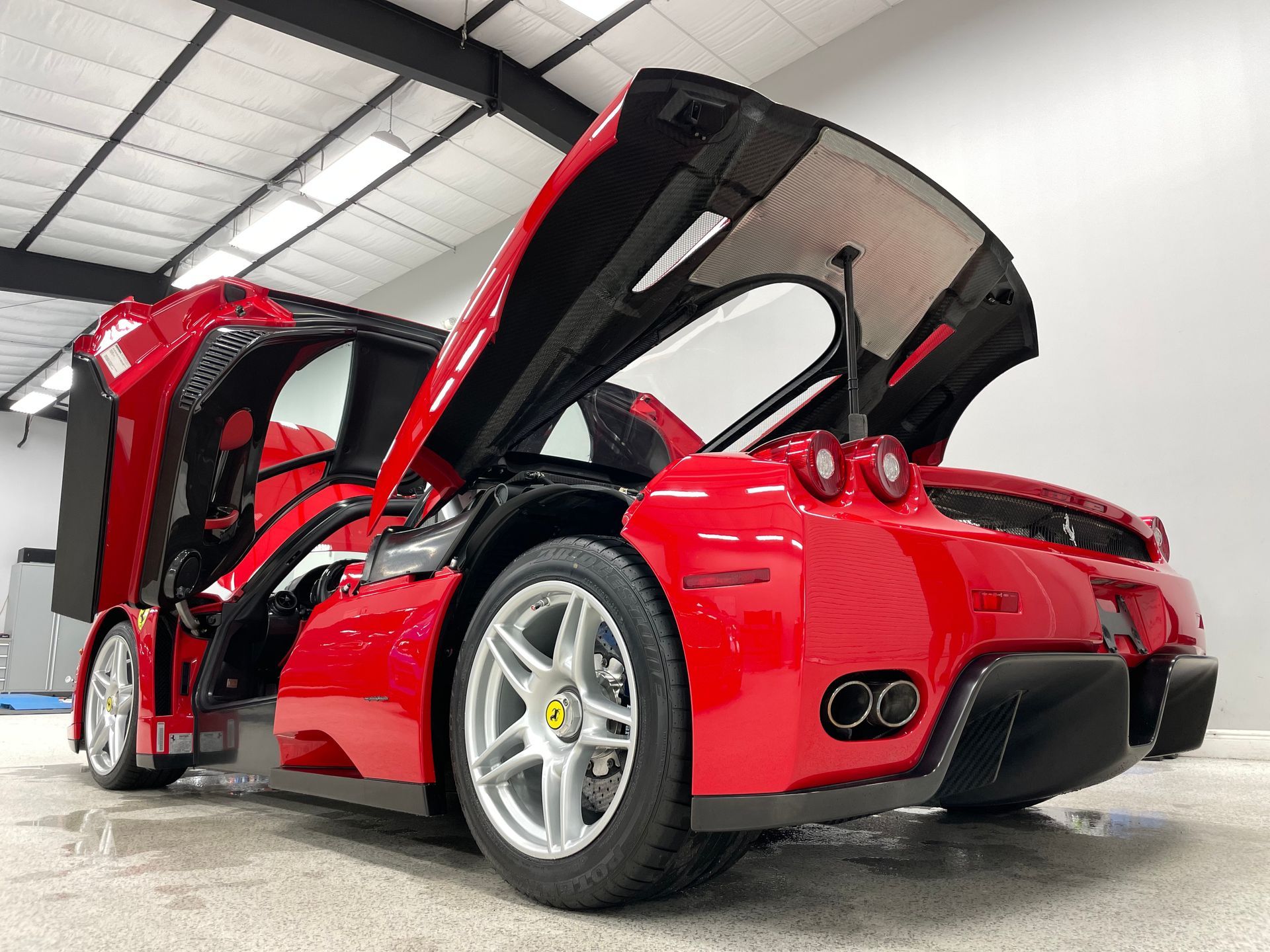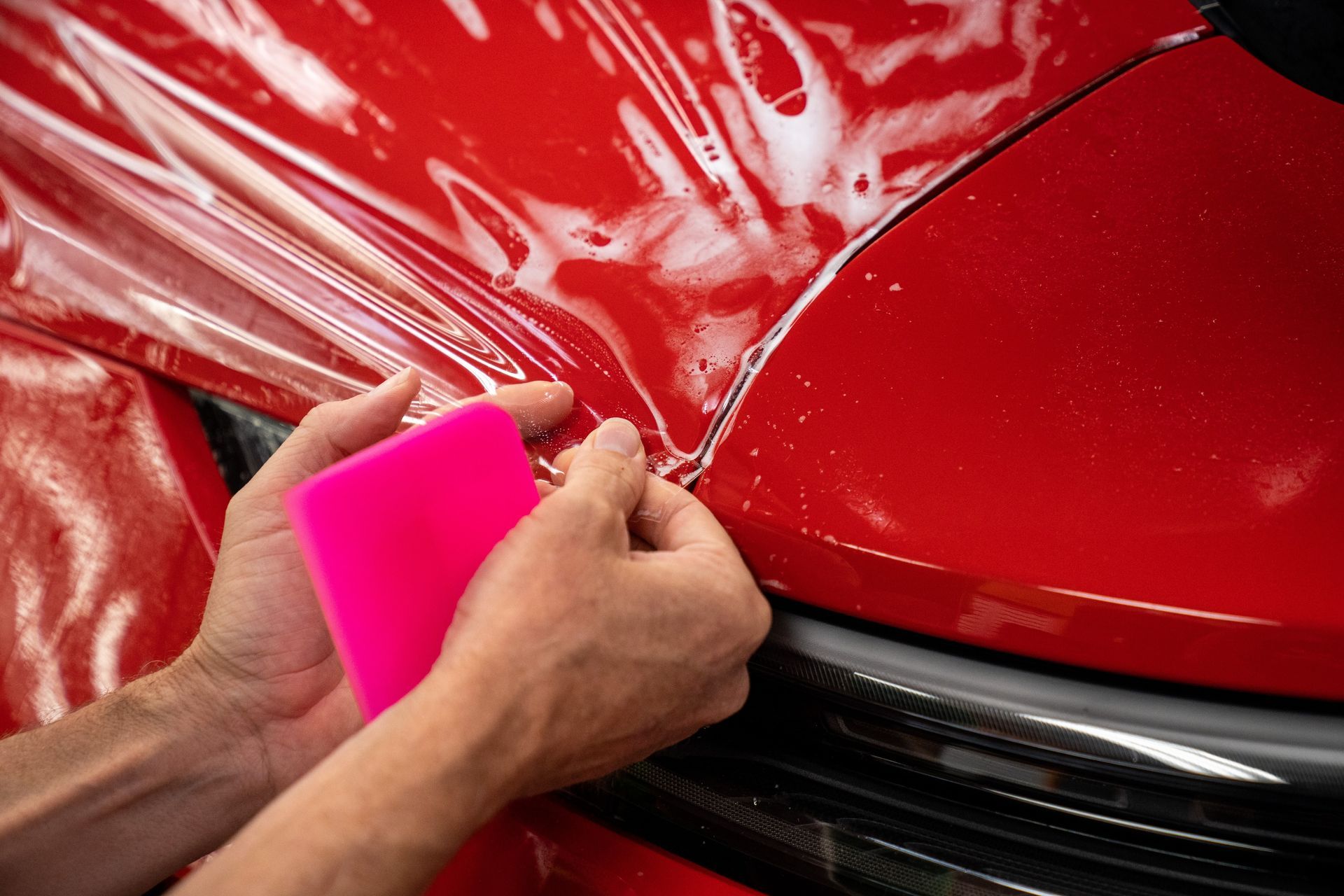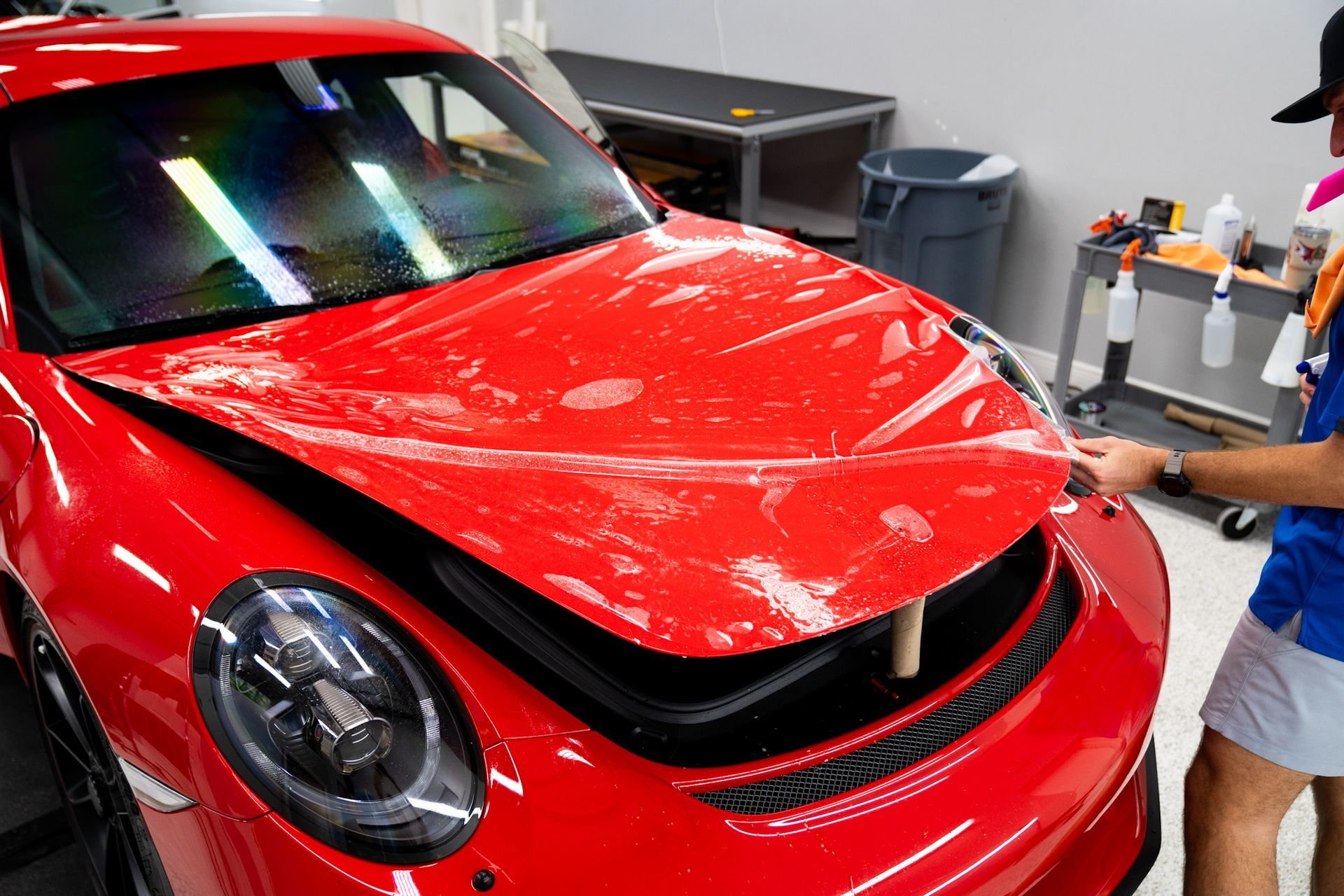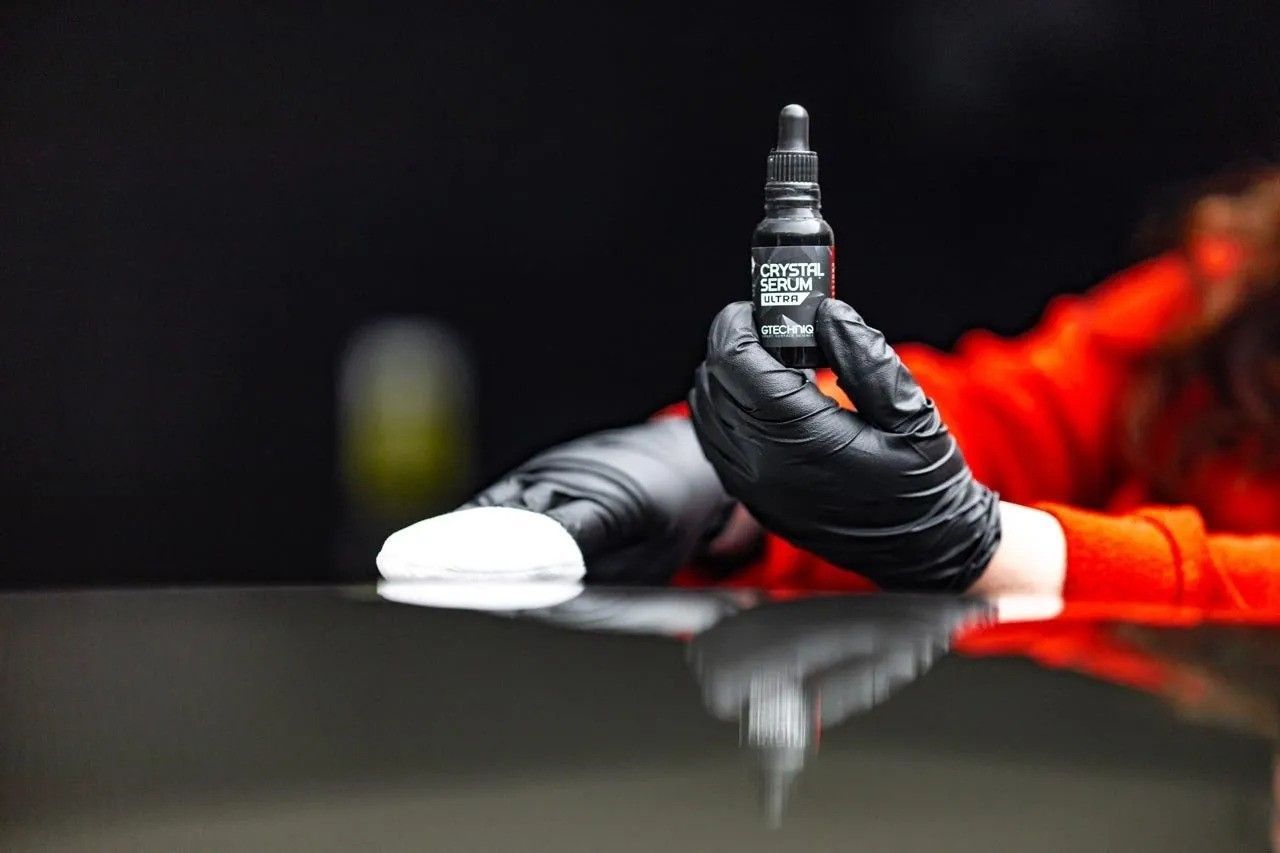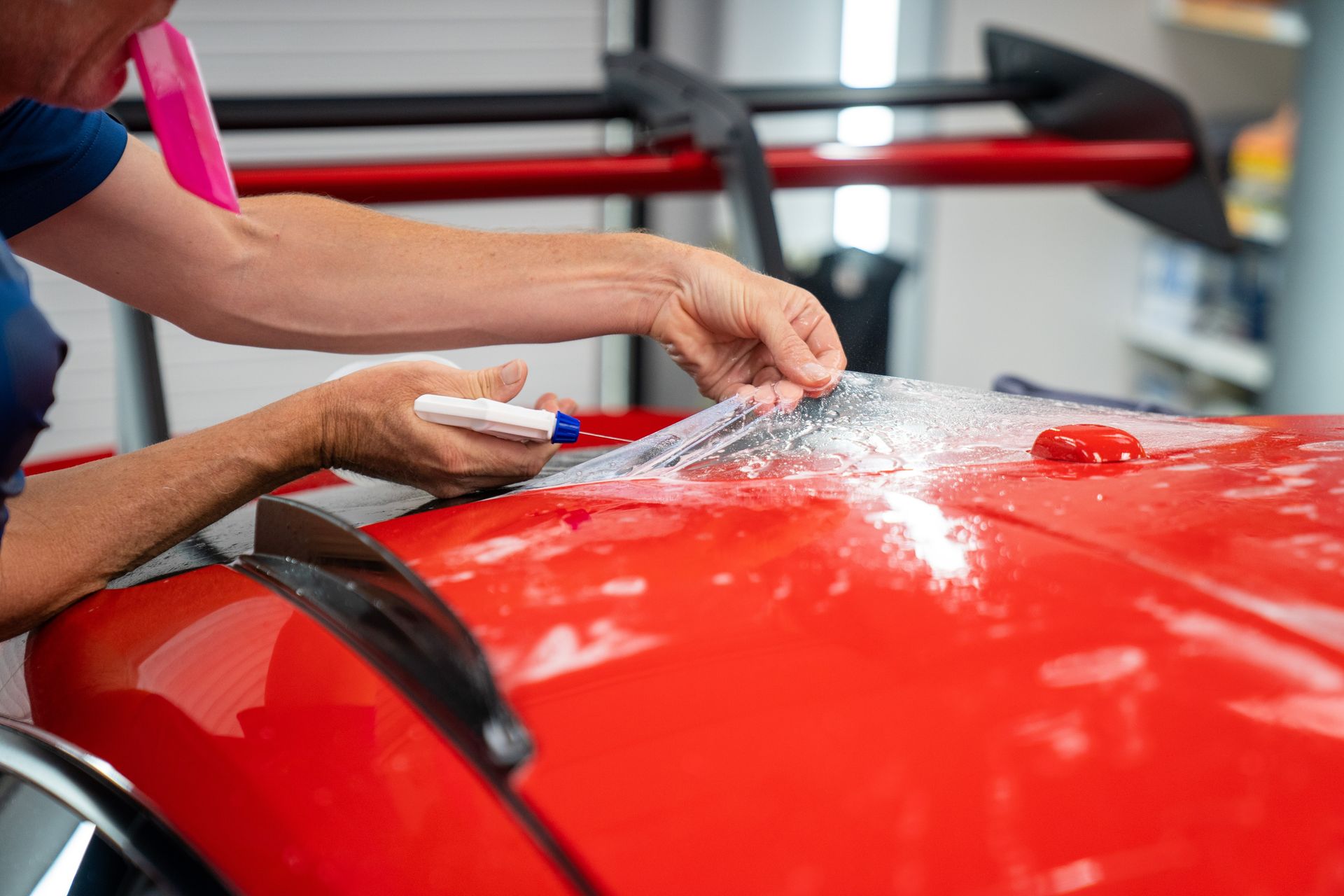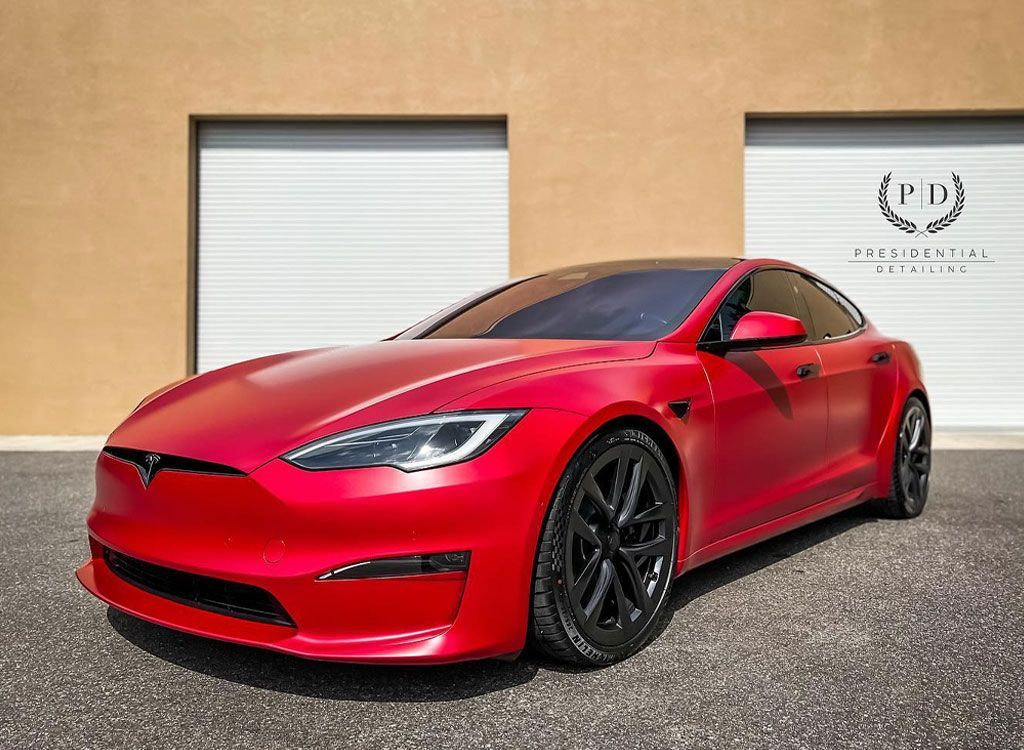Self-Healing Properties of PPF: Understanding Paint Protection Film Technology
CALL (813) 723-9679
GET A FREE ESTIMATEWhen it comes to preserving a vehicle's exterior, few protective solutions match the effectiveness of paint protection film. This advanced film acts as a virtually invisible barrier, capable of self-healing from minor abrasions and scratches—a feature that once seemed futuristic but is now made possible through modern material innovation. The technology behind PPF blends cutting-edge engineering with durable, high-performance polymers designed to maintain a vehicle’s pristine appearance over time.
The self-healing properties of paint protection film work through a unique polyurethane layer that can recover from surface-level scratches when exposed to heat, allowing its particles to rearrange and return to their original shape. This innovative technology utilizes molecular structures that react to temperature changes, similar to how an ice cube reshapes when warmed, making it highly effective for maintaining vehicle paint appearance and protection over time.
Self-Healing PPF Technology Overview
Self-healing PPF is a marvel of engineering, designed to keep your vehicle looking pristine while providing robust protection from elements that can mar its appearance. What makes this film stand out isn't just its transparency but the advanced materials and technology that enable it to recover from minor scratches and abrasions.
Material Composition
This innovative product is composed of several distinct layers, each serving a critical function in its performance. First, there’s the release liner, a 3mm-thick layer that's removed during installation. Think of it as a package that prepares the product for use; without it, you wouldn't get to the good stuff. Then comes the acrylic adhesive layer, which is 1.6mm thick and critical to making sure the PPF bonds firmly to your vehicle's surface. This strong adhesion ensures that your PPF will remain in place regardless of the roughness of the road. The real protective feature lies in the 6mm polyurethane layer. This thick layer is specifically designed to disperse energy from impacts, such as dings and chips from rocks or debris on the road. It's fascinating how this layer absorbs shock, much like a cushion protecting you from an inadvertent bump.
Lastly, we have the top clear coat, which serves multiple purposes: not only does it provide an additional protective barrier against UV rays and scratches, but it also plays a pivotal role in enabling those remarkable self-healing properties. In essence, when you encounter minor scratches on your vehicle's surface, heat exposure is all it takes for these damaged areas to restore themselves. When exposed to heat—be it from sunlight or even a warm day—this top layer allows the material's molecules to rearrange themselves back into their original formation, minimizing or completely removing visible marks left by light abrasions.
How Self-Healing Mechanisms Work
At the core of self-healing paint protection film technology lies a unique composition crafted from thermoplastic polyurethane. This remarkable material is not just flexible; it has self-restorative capabilities that empower it to regain its original form after sustaining scratches or minor abrasions. Imagine stretching a rubber band; when released, it snaps back to its original shape. This analogy encapsulates how self-healing technology functions — resilience in action.
Scientific Principles of Self-Healing
The self-healing mechanism is rooted in the rearrangement of polymer chains within the film's top coat. When the surface gets scratched, these polymer chains are disrupted. However, when exposed to heat—whether from sunlight or warm water—the chains can reposition themselves, merging together and effectively covering up those superficial scratches. We can compare this remarkable process to melted wax filling in gaps when it hardens again, resulting in a smooth surface. This method can rejuvenate scratched surfaces remarkably well, allowing PPF to recover about 80% of its original clarity and gloss after the healing process. This capability enhances aesthetic appeal and ensures continued protection against environmental damage.
The optimal temperature range for activating this self-healing process typically falls between 140°F (60°C) and 194°F (90°C). It’s astonishing to think that such high temperatures accelerate the movement of polymer chains. In practical terms, as your vehicle basks under the sun or receives warm water during washing, those tiny imperfections vanish quite literally before your eyes. Beyond this scientific marvel, understanding how to properly utilize these materials can considerably extend their lifetime on your vehicle while boosting overall performance and durability.
Environmental and Physical Protection Benefits
Self-healing PPF acts as a powerful shield against various environmental hazards that can compromise your vehicle's appearance. One of its most valuable benefits is its resistance to UV rays and harsh chemicals. While your car’s paint may appear glossy now, prolonged exposure to sunlight can lead to fading and oxidation over time. The clear coat layer of PPF helps block harmful UV radiation, significantly reducing the risk of long-term paint damage and helping to preserve the vehicle’s original finish. This added protection not only keeps your car looking newer for longer but also plays a key role in maintaining its resale value.
The impact resistance offered by self-healing PPF is especially valuable for drivers who regularly navigate gravel roads or city streets scattered with debris. The film’s durable polyurethane layer is engineered to absorb and disperse the energy from small impacts, helping to prevent unsightly paint chips and surface damage. This protection allows you to drive with greater peace of mind, knowing your vehicle's finish is shielded from the wear and tear of everyday travel. Additionally, the self-healing properties of PPF enable minor scratches to disappear when exposed to heat, offering a level of defense and surface restoration that conventional coatings simply cannot match. With benefits like these, maintaining your car's decorative finish becomes less about frequent repainting and more about smart choices that preserve its integrity. The combination of UV blocking and impact resistance actively extends the life of your vehicle's exterior while minimizing costly repairs. Protecting your investment is paramount—and with self-healing PPF, you can keep your car looking brand new without the constant upkeep regular paints require.
Variations and Types of PPF
Paint protection film has progressed beyond a universally applicable solution. Today, various finishes and features allow vehicle owners to choose PPF that matches both their lifestyle and aesthetic preferences. Each type of PPF, from glossy sheens to water-repelling surfaces, offers unique benefits. Below is a breakdown of the most popular PPF variations and how they serve different automotive needs:
- Gloss Finish PPF: Gloss finish PPF is ideal for those who want to maintain or enhance the polished, showroom-like appearance of their vehicle. This variation mimics the high-shine effect of a professional detail, adding depth and luster to your paint while providing superior protection against road debris, UV rays, and environmental contaminants. It’s a popular choice for luxury car owners and automotive enthusiasts who prioritize both aesthetics and long-term defense. The glossy finish not only enhances visual appeal but also resists yellowing and staining, keeping your car looking vibrant over time.
- Matte Finish PPF: For drivers who prefer a more understated and sophisticated look, matte finish PPF offers a non-reflective, velvety surface that transforms a standard paint job into a sleek, modern statement. Despite its muted appearance, matte PPF doesn’t compromise on protection. It retains all the key features of high-end films, including self-healing capabilities that allow minor scratches to vanish with the application of heat. This type of PPF is perfect for those who appreciate minimalism and want a unique texture that stands out without being flashy.
- Hydrophobic PPF: Hydrophobic PPF is specifically engineered to repel water, making it especially useful for those living in wet or humid climates. Its advanced surface layer prevents water, dirt, and grime from clinging to your vehicle, dramatically reducing the time and effort required for cleaning. Rainwater and splashes bead up and slide off the surface, taking contaminants with them. This type of PPF not only helps maintain a cleaner appearance between washes but also protects against water spots and staining—ideal for daily drivers exposed to challenging weather conditions.
- Pre-Cut PPF Kits: Designed for convenience and precision, pre-cut PPF kits are custom-tailored to fit specific vehicle makes and models. These kits eliminate the guesswork from installation, reducing the chances of misalignment or trimming errors. Whether applied by a professional or an experienced DIYer, pre-cut kits ensure edge-to-edge coverage and a factory-like finish. In addition to saving time, they provide peace of mind by offering a reliable and uniform application that matches the contours of your vehicle perfectly.
Understanding the different types of PPF allows you to tailor your paint protection strategy to your vehicle’s needs and your personal preferences. Whether you're drawn to the glossy sheen of a freshly detailed car, the muted elegance of a matte finish, the easy-clean surface of hydrophobic film, or the precision of pre-cut kits, there's a PPF option designed to deliver both form and function.
Maintenance Best Practices
Maintaining self-healing PPF is both simple and vital for enhancing its effectiveness and appearance over time. Regular care protects the film from environmental damage and ensures that its self-healing properties remain intact. One key practice is to establish a consistent cleaning routine for your vehicle. Aim to wash your vehicle every one to two weeks using a mild detergent paired with a soft cloth or microfiber mitt. This approach prevents dirt from accumulating, which can lead to scratches if left unchecked. An important tip is to steer clear of high-pressure washes, as they can inadvertently lift edges of the film or even cause irreparable damage. Instead, opt for gentle hand washes where you're in control and can carefully inspect the surface for any potential issues during the cleaning process. When doing this cleansing routine, be mindful of the products you use on the PPF.
Avoiding Abrasives
It's crucial to avoid abrasive polishes or waxes when caring for your PPF. These products have the potential to damage the film's surface and weaken its self-healing properties, thereby diminishing its protective properties. Instead, invest in PPF-specific cleaning products designed to preserve the top layer's integrity without causing harm. Not only will these specialized cleaners effectively remove grime, but they'll also help maintain that glossy finish while safeguarding your investment. When applying any product, ensure you follow the instructions closely. Using a soft cloth or microfiber towel enhances this process further by minimizing potential contact scratches during application and removal of cleaners. As critical as regular cleaning is, scheduling deeper inspections should not be overlooked.
Annual Checkups
Make it a priority to schedule annual checkups with professional installers who specialize in PPF. During these evaluations, trained experts can inspect your film for signs of wear, such as lifting edges or discoloration caused by prolonged exposure to environmental factors. Early intervention in addressing these minor concerns can prevent more significant issues down the road, saving you from costly repairs or replacements. By consistently following these recommended practices—from regular washes using appropriate products to timely professional inspections—you'll effectively protect your vehicle's finish and ensure that the PPF continues functioning at its best.
Incorporating these strategies will maximize the longevity and performance of your paint protection film while keeping your vehicle looking stunning for years to come.
Superior PPF Service in Sarasota, FL
Protect your vehicle against chips, scratches, and the harsh Florida sun with Presidential Automotive Detailing’s premier paint protection film services in Sarasota, FL. Our expertly applied, precision-cut PPF acts as an invisible barrier, preserving your car’s flawless finish while enhancing its durability on the road. Whether you're safeguarding a new purchase or extending the life of a beloved ride, our team delivers long-lasting protection tailored to your vehicle’s needs. Schedule your appointment today and experience the confidence that comes with true paint defense!

